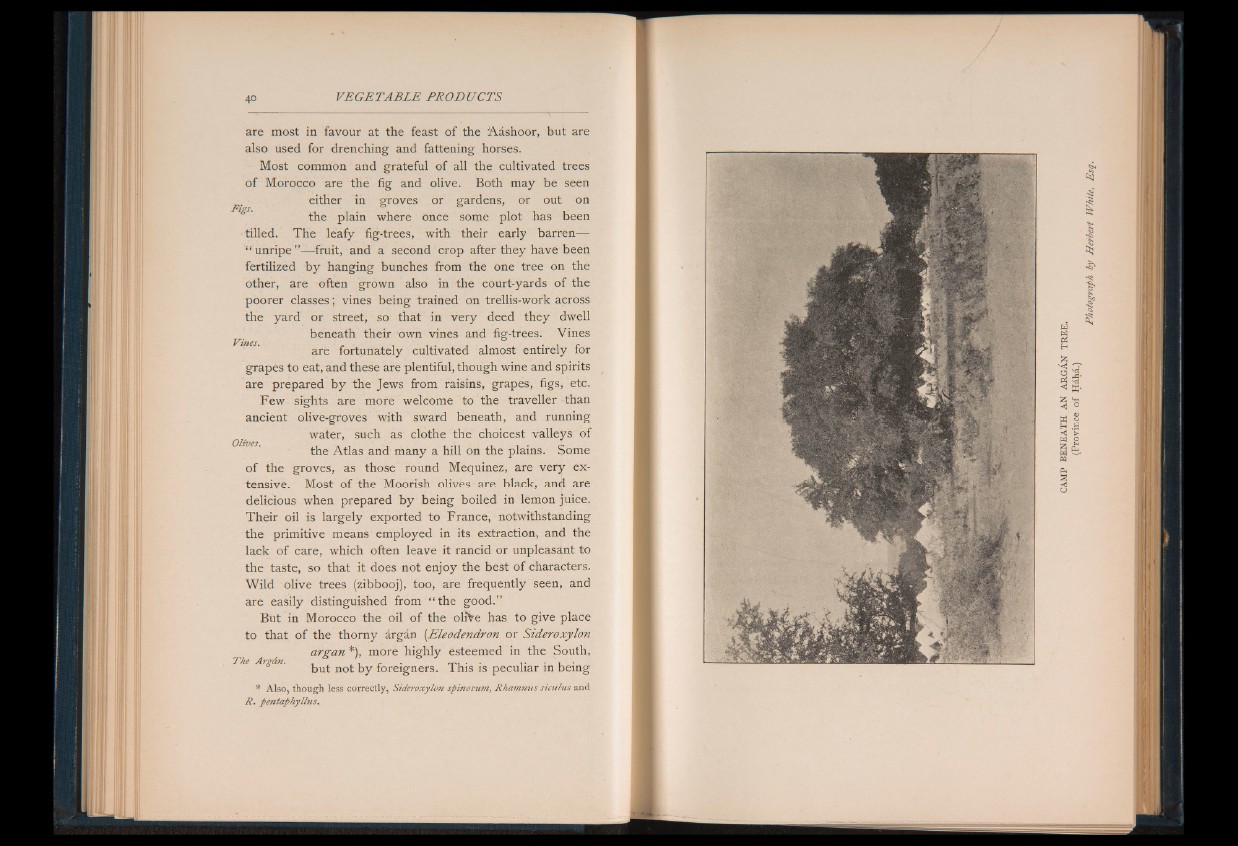
are most in favour at the feast of the Aashoor, but are
also used for drenching and fattening horses.
Most common and grateful of all the cultivated trees
of Morocco are the fig and olive. Both may be seen
either in groves or gardens, or out on
Figs.
the plain where once some plot has been
tilled. The leafy fig-trees, with their early barren—
“ unripe fruit, and a second crop after they have been
fertilized by hanging bunches from the one tree on the
other, are often grown also in the court-yards of the
poorer classes; vines being trained on trellis-work across
the yard or street, so that in very deed they dwell
beneath their own vines and fig-trees. Vines
Vines. .
are fortunately cultivated almost entirely for
grapes to eat, and these are plentiful, though wine and spirits
are prepared by the Jews from raisins, grapes, figs, etc.
Few sights are more welcome to the traveller than
ancient olive-groves with sward beneath, and running
water, such as clothe the choicest valleys of
Olivss * •
the Atlas and many a hill on the plains. Some
of the groves, as those round Mequinez, are very extensive.
Most of the Moorish olives are black, and are
delicious when prepared by being boiled in lemon juice.
Their oil is largely exported to France, notwithstanding
the primitive means employed in its extraction, and the
lack of care, which often leave it rancid or unpleasant to
the taste, so that it does not enjoy the best of characters.
Wild olive trees (zibbooj), too, are frequently seen, and
are easily distinguished from “ the good.”
But in Morocco the oil o f the oliVe has to give place
to that of the thorny argan (Eleodendron or Stderoxylon
argan *), more highly esteemed in the South,
but not by foreigners. This is peculiar in being
# Also, though less correctly, Sideroxylon spinosum, Rhamnus siculus and
R. pentaphyllus.